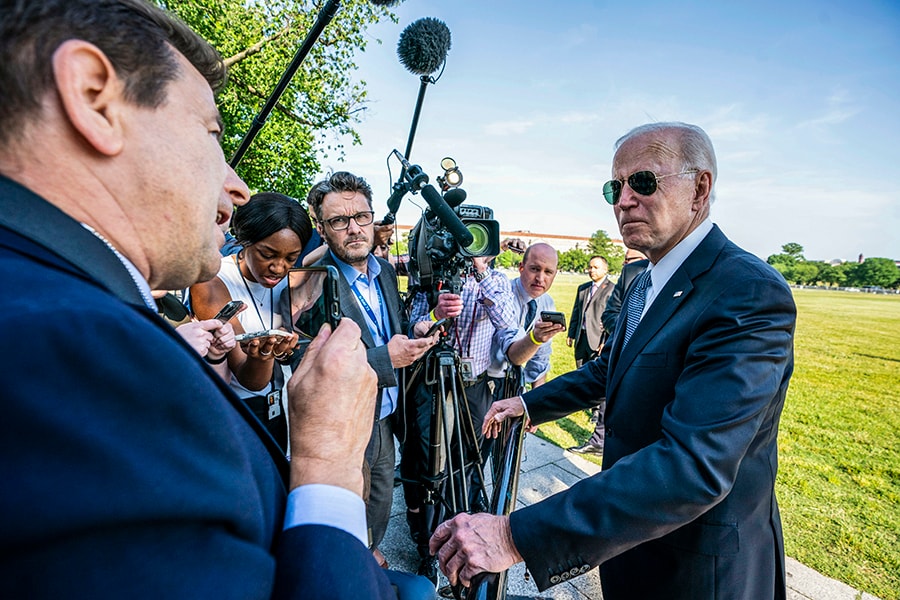
Biden orders intelligence inquiry into origins of virus
Even before Biden's order, US intelligence agencies had intensified their work on the origins of the pandemic, driven at least in part by the growing openness of some scientists to the theory that the coronavirus might have accidentally leaked out of the research lab
 President Joe Biden speaks to reporters outside the White House on Tuesday, May 25, 2021. Biden ordered U.S. intelligence agencies on Wednesday, May 26, 2021, to investigate the origins of the coronavirus, indicating publicly that his administration takes seriously the possibility that the virus was accidentally leaked from a lab, as well as the prevailing theory that it was transmitted by an animal to humans; Image: Doug Mills/The New York Times
President Joe Biden speaks to reporters outside the White House on Tuesday, May 25, 2021. Biden ordered U.S. intelligence agencies on Wednesday, May 26, 2021, to investigate the origins of the coronavirus, indicating publicly that his administration takes seriously the possibility that the virus was accidentally leaked from a lab, as well as the prevailing theory that it was transmitted by an animal to humans; Image: Doug Mills/The New York Times
WASHINGTON — President Joe Biden ordered U.S. intelligence agencies on Wednesday to investigate the origins of the coronavirus, indicating that his administration takes seriously the possibility that the deadly virus was accidentally leaked from a lab, in addition to the prevailing theory that it was transmitted by an animal to humans outside a lab.
In a statement, Biden made it clear that the CIA and other intelligence agencies had not yet reached a consensus on how the virus, which prompted a pandemic and has killed almost 600,000 Americans, originated in China. But he directed them to conduct a deeper investigation and report back to him in 90 days.
“I have now asked the intelligence community to redouble their efforts to collect and analyze information that could bring us closer to a definitive conclusion,” the president said.
Biden’s statement, his most public and expansive yet on the question of how the virus spread to humans, came as top health officials renewed their appeals this week for a more rigorous inquiry. And it followed mounting criticism of a report from an international team of experts convened by the World Health Organization that largely dismissed the possibility that the virus had accidentally escaped from a Chinese laboratory called the Wuhan Institute of Virology.
Deep uncertainty remains about the origins of a virus that spread to every part of the globe over 17 months. The assessments of scientists are largely unchanged: Many believe that a so-called natural spillover from animal to human remains the most plausible explanation. While U.S. intelligence agencies have collected some new evidence, the additional information is not enough to allow them to draw definitive conclusions about long-simmering theories regarding the lab in the city of Wuhan, the center of the outbreak.
©2019 New York Times News Service




